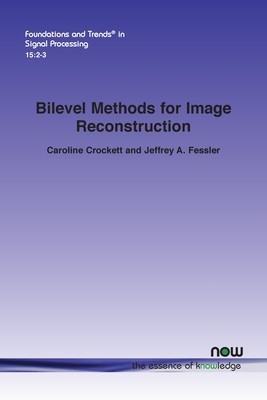
- We will send in 10–14 business days.
- Author: Caroline Crockett
- Publisher: Now Publishers
- ISBN-10: 1638280029
- ISBN-13: 9781638280026
- Format: 15.6 x 23.4 x 1 cm, softcover
- Language: English
- SAVE -10% with code: EXTRA
Reviews
Description
Methods for image recovery and reconstruction aim to estimate a good-quality image from noisy, incomplete, or indirect measurements. Such methods are also known as computational imaging. New methods for image reconstruction attempt to lower complexity, decrease data requirements, or improve image quality for a given input data quality.
Image reconstruction typically involves optimizing a cost function to recover a vector of unknown variables that agrees with collected measurements and prior assumptions. State-of-the-art image reconstruction methods learn these prior assumptions from training data using various machine learning techniques, such as bilevel methods. This review discusses methods for learning parameters for image reconstruction problems using bilevel formulations, and it lies at the intersection of a specific machine learning method, bilevel, and a specific application, filter learning for image reconstruction. The review discusses multiple perspectives to motivate the use of bilevel methods and to make them more easily accessible to different audiences. Various ways to optimize the bilevel problem are covered, providing pros and cons of the variety of proposed approaches. Finally, an overview of bilevel applications in image reconstruction is provided.EXTRA 10 % discount with code: EXTRA
The promotion ends in 20d.19:34:40
The discount code is valid when purchasing from 10 €. Discounts do not stack.
- Author: Caroline Crockett
- Publisher: Now Publishers
- ISBN-10: 1638280029
- ISBN-13: 9781638280026
- Format: 15.6 x 23.4 x 1 cm, softcover
- Language: English English
Methods for image recovery and reconstruction aim to estimate a good-quality image from noisy, incomplete, or indirect measurements. Such methods are also known as computational imaging. New methods for image reconstruction attempt to lower complexity, decrease data requirements, or improve image quality for a given input data quality.
Image reconstruction typically involves optimizing a cost function to recover a vector of unknown variables that agrees with collected measurements and prior assumptions. State-of-the-art image reconstruction methods learn these prior assumptions from training data using various machine learning techniques, such as bilevel methods. This review discusses methods for learning parameters for image reconstruction problems using bilevel formulations, and it lies at the intersection of a specific machine learning method, bilevel, and a specific application, filter learning for image reconstruction. The review discusses multiple perspectives to motivate the use of bilevel methods and to make them more easily accessible to different audiences. Various ways to optimize the bilevel problem are covered, providing pros and cons of the variety of proposed approaches. Finally, an overview of bilevel applications in image reconstruction is provided.

Reviews